#belgariad
Explore tagged Tumblr posts
Text
Round 1, Match 23
Cersei, Jaime, and Tyrion Lannister (A Song of Ice and Fire) vs Torak (The Belgariad)
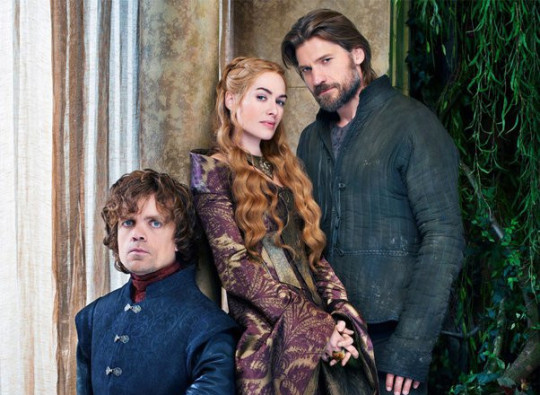
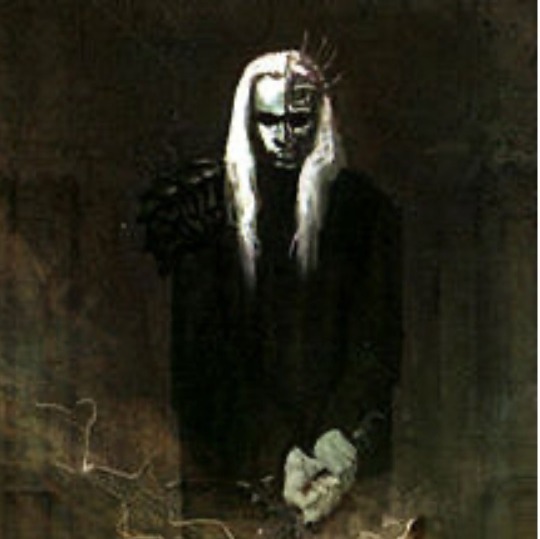
Propaganda under break
Cersei, Jaime, and Tyrion Lannister
Cersei HATES Tyrion. Hes not a big fan of her either on account of her absolutely hating him. Cersei (and her twin Jaime, who is actually a good brother to Tyrion) were born a few years earlier than Tyrion, and blames him for "killing their mother," because she died in childbirth. Everyone in their family (except Jaime) hates Tyrion because he has dwarfism, but Cersei hates him more than anyone else and has wanted him dead since childhood. (spoilers beyond this point for the books and show both) When Cersei's son is killed, her immediate instinct is to blame Tyrion and throw him in jail. She does everything in her power to have him killed.
------
The incest for starters. The fact that Cersei doesn’t see Tyrion as human. All the backstabbing. And that they made their own family problems everyone else’s tragic backstory and present out of their own lust for power
------
here's a quote from one of tyrion's chapters: "When your sister cries, you were supposed to comfort her... but this was Cersei."
Torak
They stole an orb from their eldest brother and caused a centuries long war between his people and the people of his brothers. (They are all gods).
He's also just kind of a dick
#worst siblings tournament#round 1#poll#asoiaf#game of thrones#a song of ice and fire#belgariad#torak#Jaime Lannister#Cersei Lannister#Tyrion Lannister#poll tournament
23 notes
·
View notes
Text
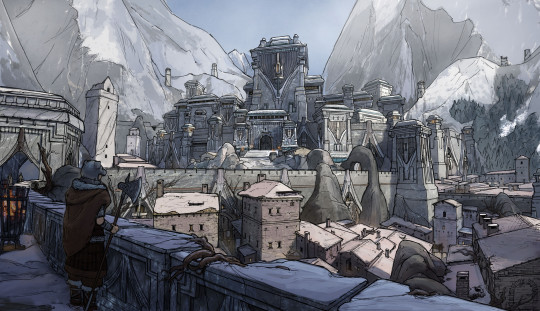
Belgariad - Cherek by Dominic Chan
25 notes
·
View notes
Text

I was robbed! The glitter did not show in the photograph!
A continuation of the Mystery World Map I made while listening to Conan the Barbarian. It's giving Isle of Riva vibes from the Belgariad.
#Riva#Belgariad#Malloreon#David Eddings#conan the barbarian#sword and sorcery#robert e howard#map#map making#maps#my maps#cartography#bluebird art#bluebird reads#my artwork#my art#mapmaking
4 notes
·
View notes
Text
youtube
the beglariad inspired dungeon synth album is straight bangers
23 notes
·
View notes
Text
I saw someone recently describe a book series I enjoyed as a teen (The Belgariad) as "aggressively heterosexual."
and on the one hand, Yes.
Absolutely.
But on the other hand, these were published in the early 1980s, and what I loved best about them on first read through was how much they absolutely dripped with familiar fantasy tropes. You saw the large strokes of plot telegraphed from extremely early, so the details could be the delightful surprise without making me as a reader feel like I failed to understand what was happening. It was unashamedly built on so many familiar tropes, and doesn't back down from its own foreshadowing. I can't think of a single "Waht a Tweeest!" moment that wasn't repeatedly foreshadowed.
But back to the aggressively hetero thing
There weren't any characters with much room for a queer reading from where I was at thirteen, but the hetero romances were pleasingly varied.
Farmboy and princess tsundere? Check!
Middle-aged co-parenting and mutual pining? Check!
Doomed courtly love? Check!
The zealot and the harlot? Spicy check!
Old Man Widower still quietly pining for his late wife? Check!
Bonus: probably ace horseman who only needs the chaste comfort of the herd and his vengeance? Check!
I know my neighborhood of the internet champions new authors and underrepresented perspectives, and so do I, but this old series is such a comfort read for me. If you get the chance, give it a try.
#Belgariad#Polgara says no to infantilization of Girlboss. Polgara is Momboss#Old books deserve love#Troperiffic#80s Fantasy Lit
47 notes
·
View notes
Text
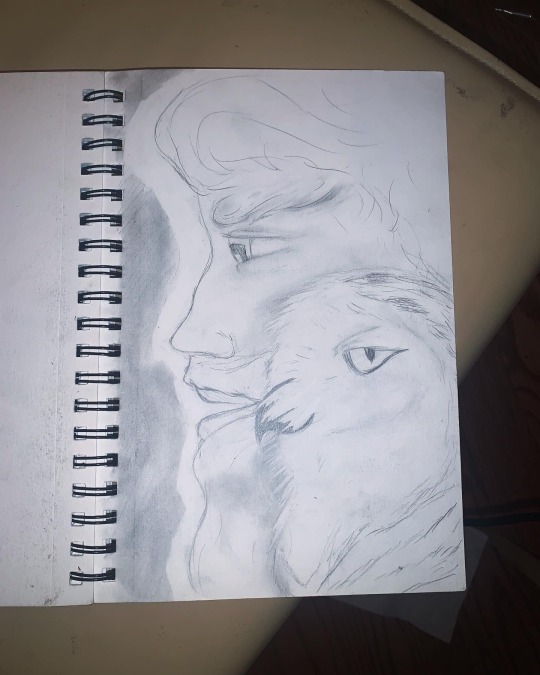
Aldur and his Owl Totem, from the Belgariad.
3 notes
·
View notes
Text
I’m so happy Mandorallen has posts on Tumblr because he ended up being my most beloved out of the whole Belgariad series.
The scenes in the last book where the Mimbrate Knights do charges into the enemy had me feeling some type of way. Mandorallen leading the charges and the descriptions.
Ugh. Knight Man. Love me a Mandorallen.
1 note
·
View note
Text
As I said in a previous post, one of the main strengths and virtues of the Belgaria, and what made it such a success at the time, was how it subverted the typical "Tolkien archetypes "that had become prevalent thanks to the LotR copycats. (I spoke about this in my Tolkienesque Renaissance posts).
It showed how you could reuse the "Tolkienesque formula" and the tropes popularize by Lord of the Rings... while still switching, twisting, reinventing what had already turned into cliches and stereotypes. Yes, now the Belgariad series seems like a cliche because we are used to modern fantasy... But you have to put this back in the context of the 80s. The time of the early D&Ds. In fact, comparing The Belgariad and the early stages of D&D is quite revealing - you should try, if you have time.
But just to highlight the way the Belgariad subverts the "Tolkien mold" some highlights (WARNING, spoilers):
The Orb of Aldur VS The One Ring. Both magical items sought after by the God of Evil, and key to his destruction - but the Orb has to be preserved and used against the God of Evil, not destroyed. Both are sentient items of ungodly power that can easily corrupt their owner into becoming world-destroying tyrants... But whereas the Rings willingly corrupts out of evil, the Orb of Aldur is actually just trying its best to please its owner and grant its wishes, simply lacking a sense of scale and not realizing the consequences of its divine powers. (Oh, an army is following you and you want to escape? LET'S SPLIT THE CONTINENT IN HALF, an endless chasm should stop them)
Belgarath vs Gandalf. Both nearly immortal magic-users, who have wandered the earth for a very long time, are some of the strongest magic forces around and appear as elderly, grumpy bearded men who act as a mentor figure to the hero and guide to the protagonist-party. But Belgarath, unlike Gandalf, is a human being, and his human nature is shown in full force. He is far from being perfect - he is notably lustful and a drunkard. He had once a family, and still has a daughter. Becoming immortal and wandering the earth for millenia, seeing empires rise and fall, and the bad guys committing atrocities, and idiots being idiots, left him bitter, cynical and filled with anger and disdain at many things in the world. And his fight against the bad guys is something personal, vengeful and filled with rage.
Polgara vs... no one. As I said in my previous posts, about the Tolkienesque Renaissance and the "woman-wizard", Polgara was one of the first attempts in fantasy literature at the time to subvert this sexist cliche that had installed itself in the post-Tolkien fantasy, and that Pratchett denounced several times (in his article "Why Gandalf never married" or his novel "Equal Rites"). Because Polgara was one of the rare powerful female magic users of the 80s to be A) just as powerful and a full equal to the male magic user ; and B) a good person on the side of the heroes. And it was quite a BIG step to have a literal "female Gandalf" back in the 80s.
Zedar vs Saruman. Zedar is just like Saruman a wizard (sorry "sorcerer" because another Tolkien subversion, in this world "wizard" is an insult) who betrayed his order to follow the local Evil God. But unlike Saruman he is not a great mastermind trying to cross everybody: he is almost a ghost of a character who keeps fleeing in front of the heroes, and when we finally see him, we discover not an arrogant bully, but a broken and sad man who deeply regrets siding with the Evil Overlord, because as it turns out, becoming the minion of an evil deity is like being in a VERY abusive relationship.
The Disciples of Aldur vs The Istari. The sorcerers of the Belgariad are also five magic-users part of an order who all appear as old bearded men... One heroic one, one betraying one, one weirdo an two coming as a package deal. But here, the idea of the Istari is played around: the reason they have their power is because they are human beings who became the personal disciples of the god of magic, and the reason they all look like old bearded men is precisely because Aldur, their god and master, looks like this, and his divine influence ended up "shaping" his disciples in his likeness.
All of the points above are why I personally enjoyed reading The Belgariad. You can literaly take it as a fun take on the Lord of the Rings-copycats. Not high literature, not great literature, unfortunately carries with it some of the problems of 80s American fantasy with it... But you know, for a Tolkien fan, it can always be a fun read as a "spot the differences and similarities, and see through the narrative what the author tried to say or highlight about Tolkinesque cliches".
[And then came the Malloreon which... *sigh*
In all honesty, the only virtue of the Malloreon as a sequel is that it extends and adds to the worldbuilding, and works at fighting the unfortunate trope of "Good White guys from the West vs Evil swarthy Easterns" that the Belgariad inherited from Tolkien and DID NOT THINK OF SUBVERTING. The Malloreon does explore this "evil East", the variety and complexity of its population, shows that not all of them were behind the Evil overlord, that they existed before and after said Evil Overlord came - in fact said God of Evil literaly destroyed a lot of thriving cultures in his attempt at complete continental domination ; and we get to see the various religious, cultural and phlosophical currents making a vast tapestry ot countries.
And that's more exploring of the "evil East" than Tolkien himself ever did, so kudos for that! But unfortunately it has to arrive in what is obviously a very bad sequel series that is badly written half of the time, has the characters reduced to caricatures, has such an obvious plot contrivence and deus ex machinas because the Eddings didn't know how they could logically lead their story where they wanted to, and where the Eddings old-fashioned sexism rears up its head alongside the first hints of the vaguely pedophile-like vibes I got from later Eddings books...]
17 notes
·
View notes
Text
Round 1, Match 22
Andrew and Ashley Graves (The Coffin of Andy and Leyley) vs Belzedar (The Belgariad)
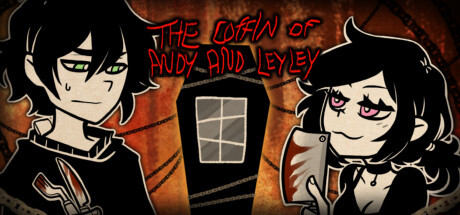

Propaganda under break
Andrew and Ashley Graves
Both ate their parents after breaking into their new home. Also there's some demon summoning they did, literally selling their victim's souls to the demon they made a deal with. Notable quote from Ashley: "We offer you that guy's soul!"
Ashley - overall a horrible person, implied undiagnosed sociopath who threatened her brother's girlfriend, emotionally manipulates and actively provokes her brother, recently began murdering people she doesn't like, cannibalizes people she murders.
Andrew - enables his sister's worse habits (when he thinks it doesn't involve him), uses plausible deniability by blaming his sister for his actions (despite the fact that he had the freedom to ignore her ideas in many cases), also a cannibal.
Belzedar
They turned traitor against their adopted brothers in a war of gods and magic.
It's suspected in universe that before their betrayal was know, they convinced one of their brothers to commit suicide.
#worst siblings tournament#round 1#poll#the coffin of andy and leyley#Belgariad#tcoaal#Andrew Graves#Ashley Graves#Belzedar#Zedar#poll tournament
9 notes
·
View notes
Text
Raven and the Crow Author Interviewed on TV!
If you’re a fan of the Raven and the Crow series and you’ve never met the author, now’s your chance to at least see him! Michael K. Falciani was recently interviewed by a TV station local to his area. ABC’s KOLO 8 spent a segment covering Michael’s writing career with specific emphasis on his newest release in the Raven and the Crow universe, Shores of Blood. Click the picture to watch the video,…
#adventure#adventure book#adventure ebook#adventure fantasy#adventure fantasy series#belgariad#david eddings#epic#epic fantasy#epic fantasy book#epic fantasy ebook#epic fantasy novel#epic fantasy series#epicfantasy#fantasy#magic#pacific northwest writers association#PNWA#quest#robert jordan#Shores of Blood#sword#sword & sorcery#sword and sandal#sword and sorcery#the raven and the crow#TRaTC#wheel of time#writing conference#writing convention
1 note
·
View note
Text

Belgariad - Faldor's Farm by Dominic Chan
22 notes
·
View notes
Text
I wanted to be characters Lucy Pevensie, and then when I was a little older, I wanted to be Polgara the Sorceress, and then a little older, Kahlan Amnell. From the Chronicles of Narnia, The Belgariad, and The Sword of Truth series, respectively.
#Lucy Pevensie#Chronicles of Narnia#CS Lewis#Polgara The Sorceress#Belgariad#Belgarath the Sorcerer#David and Leigh Eddings#David Eddings#Kahlan Amnell#Kahlan Rahl#Sword of Truth#Terry Goodkind
6K notes
·
View notes
Text
I saw someone recently describe a book series I enjoyed as a teen (The Belgariad) as "aggressively heterosexual."
and on the one hand, Yes.
Absolutely.
But on the other hand, these were published in the early 1980s, and what I loved best about them on first read through was how much they absolutely dripped with familiar fantasy tropes. You saw the large strokes of plot telegraphed from extremely early, so the details could be the delightful surprise without making me as a reader feel like I failed to understand what was happening.
But back to the aggresively hetero thing
There weren't any characters woth much room for a queer reading from where I was at thirteen, but the hetero romances came in such variety!
Farmboy and princess tsundere? Check!
Middle-aged co-parenting and mutual pining? Check!
Doomed courtly love? Check!
The zealot and the harlot? Spicy check!
And more!
Bonus: probably ace horseman who only needs the chaste comfort of the herd and his vengeance? Check!
I know my neighborhood of the internet champions new authors and underrepresented perspectives, but this old series is such a comfort read for me. If you get the chance, give it a try.
8 notes
·
View notes
Text

A map of the isle of the winds. A couple people I spoke to on the subject of books with no fanart said the Belgariad and Mallorean was criminally underrated and needed more art. Soooo here is a map I made for my mother (Who grew up with this series)
Del Rey Books! Please let me illustrate maps for a special edition of the Belgariad!
#art#books#bluebird reads#my art#cartography#my artwork#bluebird art#map#painting#my maps#watercolor#maps#map making#The Belgariad#The Mallorean#David Eddings#Pawn of Prophecy#Queen of Sorcery#Magicians Gambit#Castle of Wizardry#Enchanters end game#Guardians Of the West#King of the Murgos#Demon Lord of Karanda#Sorceress of Darsheva#The Seeress of Kell#my artwrok#noai#no ai#Bluebird reads
57 notes
·
View notes

